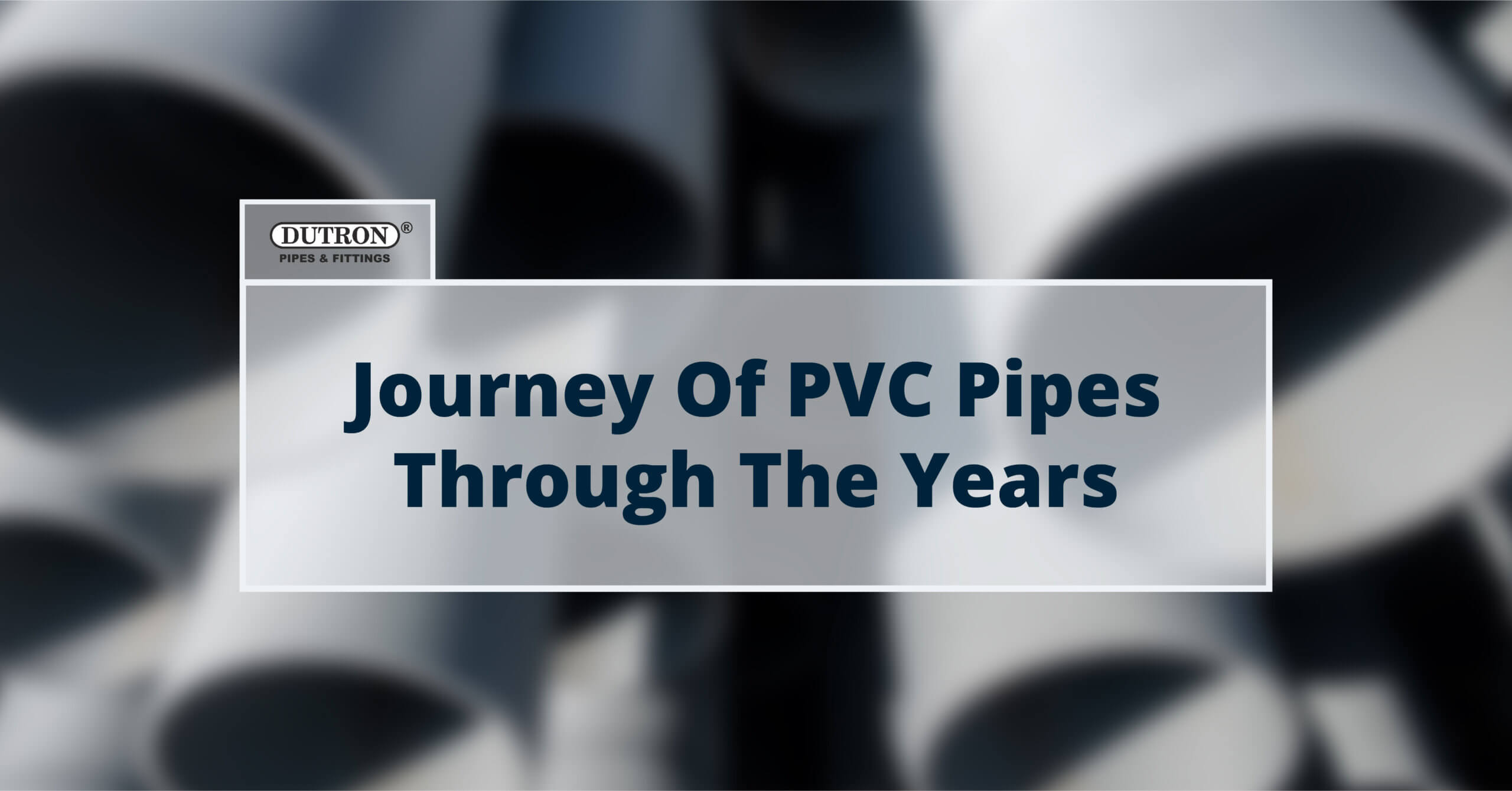
If we think of the term ‘PVC’ today, the picture we immediately draw in our minds is of a plethora of products without which our everyday life would be greatly more difficult, but rewind back to almost a hundred years ago in 1926, the first-ever applications of the PVC were heels for shoes & golf balls.
Who could’ve possibly imagined that the same product would dominate the market in the upcoming years to an extent where our day to day lives would become unimaginable without PVC.
Right from Raincoats & domestic appliances, packaging sheets & tiles, all the way to paints, pipes & fittings, PVC products hold a very strong market in electrical, agricultural, industrial, plumbing & drainage sectors owing to its advanced technologically sound processing that led industries & factories to buy PVC at huge volumes.
The amount of diversity that PVC provided led to the creation of its other forms like CPVC & UPVC. All these varieties are heavily used in the manufacturing of pipes & fittings for domestic & industrial purposes.
Today, PVC has found its place in nearly every home, society, office & industry around the world. All of this information would certainly lead to the fact that PVC is a major contributor in water supply networks of our homes & also in its discharge or outlet.
WATER SUPPLY PIPES & FITTINGS TODAY
Let’s look at some existing types of pipes and fittings that are in use in both, domestic & industrial sectors.
CAST IRON PIPES:
– Made with pig iron, resistant to corrosion & long-lasting up to 100 years.
– Requires skilled labourers for some complex tasks.
– Affordable & efficient for large cities & towns.
GI PIPES (GALVANIZED IRON PIPES)
– Made out of a sheet of steel and galvanized it with zinc to offer extra resistance.
– Used to transport gas & liquids except acidic & alkaline water to avoid quality degradation.
– Efficient, economical & less heavy than Cast Iron Pipes.
STEEL PIPES:
– Also made using steel sheets, used for water & gas supply.
– They contain welded joints along the length which may be evident in the bigger steel pipes.
– They hold up to 15-20 years and are vulnerable to acidic & alkaline water.
COPPER PIPES:
– They do not rust & are usually made of smaller circumference.
– Highly long lasting & are used to transport hot water or steam of extremely high temperatures.
PVC PIPES:
PVC was first patented by a German chemist named Friedrich Heinrich August Klatte in 1913 for his studies. The first PVC pipes were invented and manufactured between1932 to 1935 in Germany. It became a popular material to manufacture pipes and fittings over time as it was economical, durable, flexible and low maintenance. The rest is history. Even today, PVC remains one of the best and the most used plumbing materials.
~ AKA Polyvinyl Chloride, these are the most widely used pipes globally.
~ Can transport any kind of gases & fluids including acids & alkalis.
~ They are greatly elastic, resistant, efficient and strong.
~ After WWII, The commercial production of PVC was increased to make more user-friendly substances. People started mixing PVC with various lubricants, heat stabilizers, fillers and plasticizers along with time that gave the world two new materials known as CPVC and UPVC.
~ CPVC & UPVC are its other forms used hugely in domestic and industrial appliances as they’re easy to install, anti-rust & maintenance-free.
CPVC: CPVC is produced by chlorinating PVC. It is considerably more flexible and can withstand higher temperatures than regular PVC. Therefore, it has wider industrial applications than PVC in general.
The CPVC product range by Dutron is an attractive alternative to conventional plumbing systems made of G.I. and copper pipes. These pipes are manufactured in accordance with IS 15778 (ASTM D 2846 AND ASTM F 441) and fittings with ASTM -D 2846 (SDR 11) and ASTM – F 439 (SCH-80) marks.
UPVC: UPVC is another more rigid version of PVC and is used widely in the construction industry in many countries around the globe.
Dutron uPVC Plumbing system is manufactured from state-of-the-art machines and is tested at its well-equipped Quality Assurance Laboratory. The pipes and fittings are produced out of an extrusion process while maintaining all the international quality standards.
VARIOUS FORMS OF FITTINGS AVAILABLE FOR PVC PIPES
SIZES OF PVC PIPES COMMONLY AVAILABLE IN THE INDIAN MARKET:
PVC pipes have a huge size range that starts from 1/8″ and goes up to 24″ or sometimes, even bigger! The Schedule 40 PVC & Schedule 80 PVC are the most commonly available versions of the PVC. While both have equal external diameters, the internal diameter of the Schedule 40 PVC is remarkably smaller. Hence, Schedule 80 PVC pipes are way thicker in internal diameter.
About Dutron
We at Dutron believe in manufacturing pipes that are of industry-leading quality to make sure we retain the trust of all of you, our customers, that we have graciously garnered over the past XX years as your favourite pick for plumbing & drainage concerns.
Feel free to contact us for any queries or inquiries. Keep reading our blogs for more useful information.
Dutron Plastics Pvt. Ltd. GSTIN: 24AABCD1495N1ZG
Dutron Plastics (Bharuch) GSTIN: 24AABFD3916F1ZX
Nippon Polymers Pvt. Ltd. GSTIN: 24AABCN0910C1ZB
Dutron Polymers Ltd. GSTIN: 24AABCD1496R1Z7
Registered and Corporate Office:
Near Mithakhali Underbridge
Navrangpura, Ahmedabad 380 009
Gujarat, INDIA
Tel: +91 79 26561849, +91 79 26427522
Fax: +91 79 26420894
Domestic: sales@dutronindia.com
International: exports@dutronindia.com
Information: info@dutronindia.com